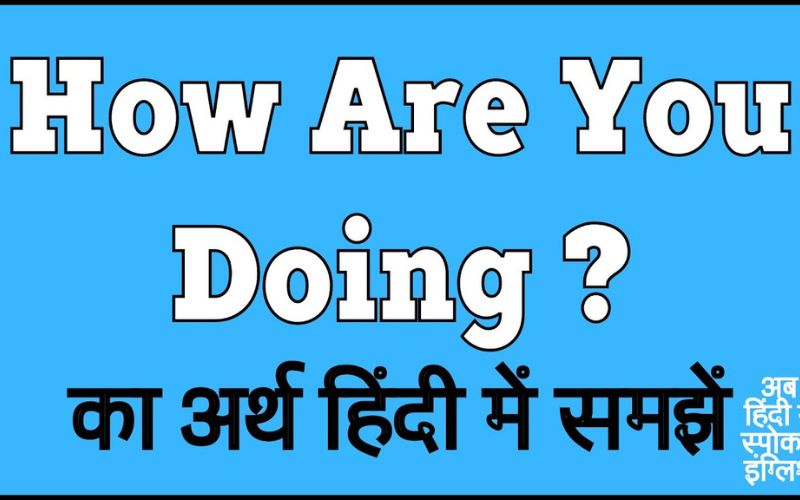In our globalized world, language serves as a bridge connecting people from diverse cultures and backgrounds. One of the most common phrases used across languages to inquire about someone’s well-being is “How are you doing?” In Hindi, this expression carries its unique cultural connotations and linguistic nuances that reflect the richness of Indian society.
Understanding the Phrase “How Are You Doing?” in English
The phrase “How are you doing?” is often used as a casual greeting or as a genuine inquiry into someone’s state of being. It can be considered a part of everyday conversation, where its meaning can vary from a simple greeting to a more profound question about someone’s health or emotional state.
Translating “How Are You Doing?” into Hindi: “कैसे हो?”
In Hindi, the equivalent phrase for “How are you doing?” is “कैसे हो?” (pronounced as “Kaise ho?”). This phrase encapsulates the same essence of checking on someone’s well-being, but its usage and reception can differ based on cultural norms and the relationship between the speakers.
Cultural Context of “कैसे हो?” in Hindi
- Politeness and Respect: In Hindi-speaking cultures, addressing someone’s well-being is often intertwined with politeness and respect. “कैसे हो?” is used not only to ask about physical health but also to convey respect and concern for the other person’s emotional state.
- Formality vs. Informality: The usage of “कैसे हो?” can vary based on the level of formality or intimacy between the speakers. In formal settings or with unfamiliar acquaintances, it might be more appropriate to use the respectful form “कैसे हैं?” (pronounced as “Kaise hain?”). In informal or friendly conversations, “कैसे हो?” suffices and is commonly used.
- Cultural Expressions: Beyond its literal meaning, “कैसे हो?” can also be a conversation starter, leading to discussions about family, work, and other personal matters. It serves as a cultural marker, indicating a genuine interest in the other person’s life.
Linguistic Nuances of “कैसे हो?”
- Tone and Intonation: The way “कैसे हो?” is delivered can significantly impact its meaning. A concerned tone might signal genuine interest, while a casual tone could denote a routine greeting.
- Response Dynamics: Just as in English, responses to “कैसे हो?” can range from a brief acknowledgment (“ठीक हूँ” – “I’m fine”) to a more detailed update on one’s well-being. These responses reflect cultural norms regarding openness and privacy.
Everyday Usage and Variations
- Regional Variations: While “कैसे हो?” is widely understood across Hindi-speaking regions, there may be variations in local dialects or informal settings. For instance, in colloquial Hindi, one might hear “क्या हाल है?” (pronounced as “Kya haal hai?”) or “सब ठीक?” (pronounced as “Sab theek?”) as alternative greetings.
- Gender Considerations: In Hindi, there are nuanced ways to address men and women. “कैसे हो?” is generally gender-neutral, but in formal contexts, one might use “कैसे हैं?” to address a group or someone with whom you wish to show particular respect.
Conclusion
The phrase “How are you doing?” carries universal meaning across languages, yet its translation into Hindi as “कैसे हो?” reveals unique cultural values and linguistic intricacies. From conveying respect and concern to initiating meaningful conversations, this simple inquiry reflects the depth of interpersonal communication in Hindi-speaking communities.
Understanding “कैसे हो?” goes beyond linguistic translation; it delves into the heart of Indian culture, where greetings are more than words—they are expressions of empathy, connection, and shared humanity.
As languages evolve and cultures intertwine, phrases like “How are you doing?” and “कैसे हो?” remind us of the universal need for human connection and understanding, bridging distances with words that transcend borders.
In essence, whether in English or Hindi, asking “How are you doing?” is a small gesture with a profound impact, fostering bonds that enrich our shared experience of being human.





